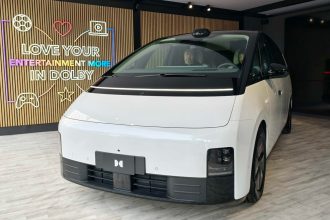3D printing has disrupted the traditional manufacturing of countless products. One you may have in your mouth right now: clear dental aligners.
Leaders in the $4 billion clear aligners market, such as Align Technology, the maker of Invisalign, owe their success to 3D printing technology. And we may be seeing just the tip of the iceberg as far as how much 3D printing will change the dental industry.
In many ways, clear aligners are ideal for 3D printing and are touted as a trailblazer. This industry, once local and small-scale, is now built around the mass production of individualized products.
Invisalign makes patient-specific clear aligners for nearly two million consumers a year, and they’re not alone. “There’s plenty of room left in the market,” says Pablo Kehyaian, an orthodontist who founded his own aligner business, SecretAligner, to respond to patient demand.
In his own practice in Madrid, Spain, Kehyaian wasn’t satisfied with the service from the leading clear aligner options, so he looked into making his own. “I wanted to control my own treatments and I wanted to try different things,” he says.
The barrier to entry was surprisingly low. A professional 3D printer to make the precision dental models was around $3,500.
“I started making my own aligners for my colleagues and friends,” he recalls. “And then I started the company in 2019.”
In just 5 years, SecretAligner grew to an 85-person company 3D printing 2,000 models per day for customers in Spain, France, and Portugal with ambitions to expand to the U.S.
Dental aligners themselves are not 3D printed; it’s the model of the patient’s teeth that are. Dentists and orthodontists use software to plan the tooth movement and generate a series of 3D models, each representing the patient’s teeth at different stages of the treatment. The plastic aligners are thermoformed around the models.
Taking on the Major Players
Today’s dental software and the ease of use of 3D printers enables companies like SecretAligner to enter the market. Kehyaian had no previous experience with 3D printers and credits his 3D printer maker, Formlabs, and its training for his company’s accelerated growth. “My company is built around Formlabs printers,” he says. “I wanted to have something that allowed me to grow and escalate fast.”
Somerville, Mass.-based Formlabs understood long ago that just offering a 3D printer wasn’t going to be enough to transform entire industries. There had to be support and a deep understanding of how customers use their printers. Formlabs has a dental division staffed by hundreds of dental professionals, including dentists and dental lab technicians.
SecretAligner is one of the first companies to use Formlabs’ new Automation Ecosystem, which launched in January. The software component of the ecosystem networks all of SecretAligner’s 30 3D printers to keep track of which dental models are being printed where, while the hardware component automatically removes the models from the printer, depositing them in a collection bin so that a new print job can start immediately.
Kehyaian now spends less on labor and can 3D print overnight and on weekends unattended.
Larger 3D printers than Formlabs can make dozens of unique models at a time, but Kehyaian prefers the flexibility of the smaller units because he’s able to scale as demand increases without a considerable investment.
3D Printing Better Braces
Clear aligners are typically not a replacement for traditional braces in every case, especially for teens. Braces are a $3.85 billion industry that hasn’t changed significantly in decades. This is where a start-up called LightForce saw an opportunity for 3D printing to disrupt and improve practices, just as Align Technology did for aligners.
“The way orthodontists do braces today is with stock brackets out of a box, and we stick them where we think they go, and then we bend wire by line of sight with pliers,” says Alfred Griffin, LightForce co-founder, CEO, and a practicing orthodontist. “As you can imagine, we can do a lot better job with a digital plan and a custom appliance.”
LightForce are 3D printed ceramic brackets customized to the shape and orientation of each individual tooth based on a dental 3D scan and optimized for placement with software.
LightForce says patients find their braces more comfortable and wear them for a shorter amount of time. A recent study found that users of LightForce had an average treatment time 45% shorter than users of conventional braces and had 41% fewer office visits. LightForce braces come loaded in an application tray that doesn’t require the orthodontist to fit but rather a trained assistant (in some states), so doctors can spend more time on diagnosis and treatment planning and less on installing hardware.
“It’s an obvious replacement for current technology,” says Griffin, who envisions a world soon where stock braces just won’t exist. Currently, 10% of orthodontists in North America use LightForce, which has been on the market only since 2020. The company just raised $80 million in a series D funding round and has become the world’s largest manufacturer of directly 3D-printed functional medical devices by volume.
For customers, the LightForce braces made specific to their teeth don’t necessarily cost more. “The majority of orthodontists don’t charge more for LightForce, and some charge less because they know they don’t have to see the patient as many times,” says Griffin.
While LightForce has invested in custom equipment and developed proprietary materials, processes, and AI-powered software, SecretAligner is taking a turnkey approach. Kehyaian anticipates even more disruption in the clear aligner market within the next decade as 3D printing materials advance and it becomes possible to 3D print the aligners directly and skip the mold-making step.
His Formlabs printers would position him to take advantage of this shift but, more likely, he believes, practitioners will simply be able to 3D print aligners in-office and on-demand, which would eliminate the waste of printed aligners discarded when the treatment plan changes.
For now, both SecretAligner and LightForce are succeeding in a market transformed by patient-specific manufacturing at a mass scale, which is something only 3D printing makes feasible and economical.
Read the full article here





